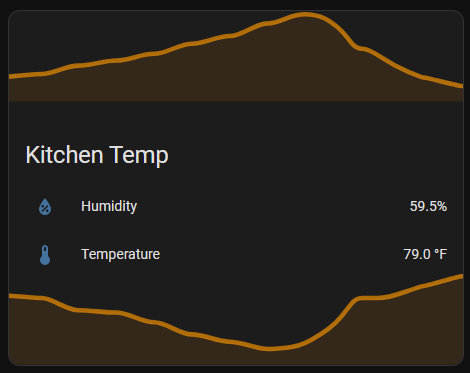As someone who’s been wanting to test (and maybe move to Podman) in the future but hasn’t really spent any time on it, what features have Red hat removed from Podman?
- 2 Posts
- 15 Comments

 3·3 months ago
3·3 months agoI’m having a similar issue lately with an AndroidTV beta (Nvidia Shield) and a Chromecast device. I wonder if its related? I unfortunately haven’t had time to look into it and just use VLC as an external player. I’ve noticed that some videos will play back with the built-in player but others will not.
EDIT: I noticed “Cinema mode” was enabled which is supposed to “Play available intros and previews before starting a movie”, but I don’t have any intros or previews. I disabled the setting and my videos are working again! Not sure why it got enabled. But if you have this on, maybe try toggling it.
EDIT2: Just saw you fixed your issue below - I’ll leave mine up in case anyone else runs into a similar problem.
Yep! The device has a built-in web server. You connect via it’s IP from any browser and configure it how you want. Here’s what it looks like in homeassistant.
Overview:

Historical data:

I would recommend this product from Shelly https://www.shelly.com/en-us/products/shop/shelly-h-and-t-gen3-1
Doesn’t no app or hub requried, works via wifi or bluetooth, has an e-ink display to conserve battery. I’ve had it since October and its been running without issue. Uses 4 AA batteries which I haven’t changed at all and are still above 75%!
There’s a newer generation (I have the previous one) so I can only imagine its even better.

 1·4 months ago
1·4 months agoRestart jellyfin and take a look at the logs? There may be some useful info there pointing to the issue. Go to your ‘dashboard’ then click ‘Logs’ - look through that see if anything stands out. If that doesn’t work you may need to enable debug logging: https://jellyfin.org/docs/general/administration/troubleshooting/

 2·6 months ago
2·6 months agoYou can limit how much RAM is available to each one, so one app doesn’t eat all of your RAM. Same with CPU.
This can be done with containers and you don’t get the overhead of virtualizing a whole operating system for every service/app you might be hosting.
Virtual Machines can be backed up, uploaded to remote storage, and restored.
This can also be done with containers in a more elegant way as there’s no need to back up any VM/OS data.
E.g. I have a docker compose file that can nearly immediately stand up a container with the right settings/image, point it to my restored data and be up and running in no time. The best part is i don’t need to back up the container/OS because that data is irrelevant.
When it’s time to do a big update on your main machine (either changing OS or getting new hardware), restoring VM’s is super simple compared to the alternative.
With the alternative you just restore your data and run
docker-compose up -d. Docker will handle the process of building, starting and managing the service.Simple example: Your minecraft server died but you have backups. You just restore the data to
/docker/minecraft. Then (to keep things really simple) you just run:docker run -d -p 25565:25565 --name minecraft -e EULA=TRUE -v /docker/minecraft:/data itzg/minecraft-serverand in a few minutes your server is ready to go.

 2·8 months ago
2·8 months agoYeah, its available to close family. There’s a few guides out there on how to set up external access. Might be a bit difficult if you’re not familiar with the technical stuff, but you should give it a go anyways if you’ve got some time to spend.

 5·9 months ago
5·9 months agoOoh silverbullet looks nice too, thanks. Link for the lazy: https://silverbullet.md/

 4·9 months ago
4·9 months agoI’d recommend the Chromecast.
You can install the Jellyfin app for Android TV and it works really well. Additionally, if you use YouTube, you can sideload SmartTube, which removes ads and auto-skips sponsored segments on some videos.
I have this setup for my parents, if that gives you an idea of how well it works for “non-technical” people. At home I have a similar setup except I’m using the Nvidia shield, which is pricier, but I would recommend it if you have a 4k TV - it uses “AI” (ML, really) to upscale content to 4k and it works really well.
If you’re on Firefox on desktop/laptop, check out Bypass Paywall [0]. It was removed from the firefox add-on store due to a DMCA claim [1], but can be manually installed (and auto updates) from gitlab. The dev even provides instructions on how to add custom filters to uBlock Origin [2], so you don’t have to add another extension but still get some benefit.
[0] https://gitlab.com/magnolia1234/bypass-paywalls-firefox-clean
[1] https://winaero.com/mozilla-has-silently-removed-the-bypass-paywalls-clean-add-on-from-amo/
[2] https://gitlab.com/magnolia1234/bypass-paywalls-clean-filters

 4·10 months ago
4·10 months agoSuper cool! Appreciate the effort that went into it.

 2·1 year ago
2·1 year agoFor the lazy, could you post a pic of what this looks like? Please and thanks either way.
Click “Activities” in the upper right and search for “tweaks”, click the “Tweaks” icon. Select “Keyboard & Mouse” and turn “Middle Click Paste” to “off”.
For Gnome ^ but I’m at work and can’t confirm.



Another great release! 🚀